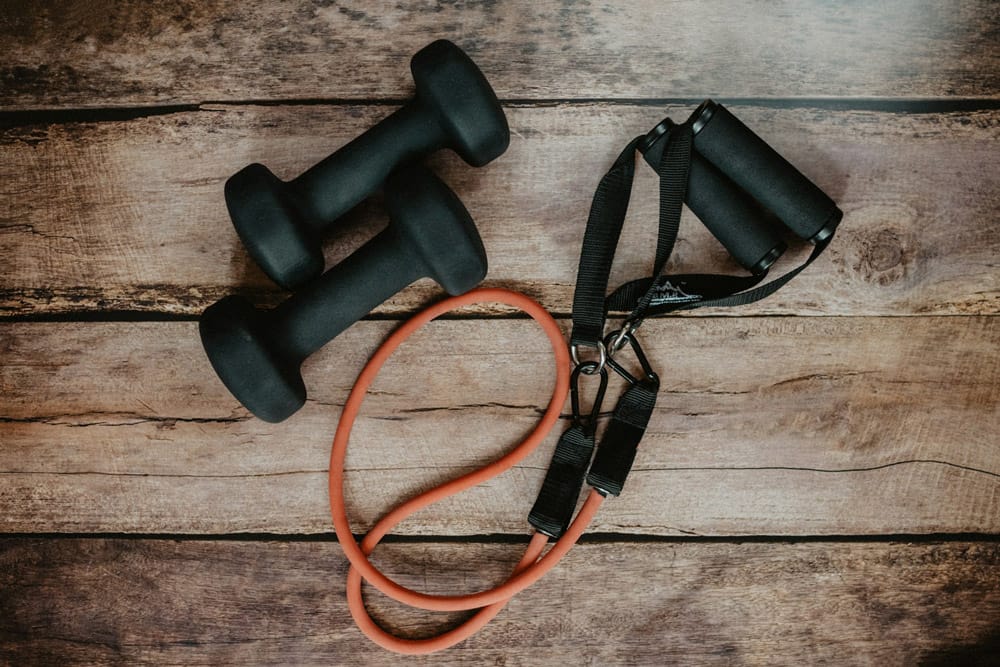The Role of Music in Exercise Performance and Motivation

You probably listen to music when you exercise while running on the treadmill or doing weight training sessions or performing intense bodyweight circuit training. Music performs significant functions beyond what passive background sounds provide.
Music directs our movements throughout exercise and determines our emotional engagement and operational capabilities. A well-selected playlist functions as an essential muscle-building resource which boosts both exercise motivation and endurance performance.
The article demonstrates how music acts on different body systems and mental functions during workout sessions alongside studies which support this understanding and specific methods to compose effective training playlists.
The Scientific Basis of Music’s Effects on Exercise
We experience psychological and physiological changes when listening to music. A musical favorite triggers brain-based dopamine secretion with neurotransmitters associated with reward and pleasurable sensations. Positive emotional changes through music give workouts a more enjoyable quality while decreasing their psychological difficulty.
The physiological impact of music extends to controlling heartbeats and respiration movements as well as action patterns. Physical activities become more efficient when participants move in sync with music beats according to scientific studies measuring running or cycling at steady musical frequencies. Music functions like a metronome enabling you to maintain both pace and rhythm during repetitive exercises.
Listening to music allows you to take your mind off discomfort symptoms. Music redirects your focus from pain and fatigue so you can extend your workout time and increase your exercise intensity beyond normal limits.
Studies Demonstrating the Impacts of Music on Exercise Performance
Multiple research studies support the scientific connection between music and better athletic outcomes.
The Journal of Sports Sciences published research showing how motivational music listening helped participants boost their exercise work output and improved their endurance compared to silent training groups. A recent scientific research study demonstrated that listening to fast-tempo music helps people exercise on a treadmill for longer periods before reaching exhaustion.
Research shows music has the ability to improve performance for anaerobic exercises. When performing resistance training subjects achieved higher weights and greater repetitions while listening to music compared to when they worked out silently.
Athletes report downscaled workout perception occurs when music is present during physical activity. Listening to music helps you maintain your physical work output because it creates mental ease while staying motivated during exercise sessions.
How Music Tempo and Style Influence Exercise
Music utilized as exercise fails to generate consistent results across all types of music. The performance impact of music during exercise depends on its tempo which is measured in beats per minute (BPM).
- 60–90 BPM: Calming effect suitable for warm-ups, yoga, stretching, and cool-downs.
- 100–120 BPM: Ideal for weightlifting and steady-state cardio like brisk walking.
- 120–140 BPM: Best for HIIT, running, and cycling due to their fast pace demands.
The rhythm and beat consistency also matter. Songs with a reliable pulse deliver better coordination and timing abilities useful for boxing, rowing and dance fitness activities.
The selection of music depends entirely on individual tastes in the genre. Music does not produce the same effect for everyone. When it comes to performance, certain people work better with pop music while others respond better to EDM, hip-hop, rock or classical. Quality emotional connection with music that matches your workout energy levels will lead to better results.
Music as a Motivational Tool
Music strengthens drive to complete exercises by creating several types of motivation for athletes. Listening to music activates several emotional responses that boost workout motivation.
Music triggers positive emotional responses to work as a psychological warm-up before the training period. The psychological warm-up through music listening enables motivation-getting through barriers especially on low-motivation days.
Music helps establish patterns which athletes use to execute their performance routines. Players use music during their pre-game moments to develop both physical and mental readiness. Specific songs become associated with personal performance energy enabling your body to know when it must switch into action.
Music lyrics drive people to try harder. Listeners gain mental strength from hearing music which focuses on defeating challenges and expanding personal capabilities and maintaining grit during trials. A well placed chorus can restart your desire to push through challenging workout intervals.
Music and Exercise Types
Cardio Workouts
Physiologically paced rhythmic upbeat songs work best for cardiovascular exercises such as running, aerobics and cycling. Music acts as an optimal tool for breathing control and pace regulation while extending exercise duration. Spin and Zumba group exercise classes demonstrate how music becomes essential for the total workout experience beyond its role as background noise.
Strength Training
Lifting weights and resistance training users focus and maintain workout quality by listening to moderate or fast-paced music tracks. Music functions to delay workout boredom so lifters can stay focused during both active lifting sets and passive rest follows.
HIIT and Interval Workouts
High-energy training sessions obtained by listening to quick-beat music maintain an energetic state with reduced interruptions that enables explosive full-out performance. Workouts requiring explosive intensity become easier to tackle when one uses music that incorporates rapid beats and few interruptions.
Recovery and Cool Down
Slower music helps the post-workout body by stimulating the parasympathetic nervous system to generate relaxation benefits which speed up recovery process. Relaxation exercises alongside cool-down stretching work best with soft acoustic music or instrumental compositions.
Practical Tips for Building Your Workout Playlist
- The speed of your musical selections should suit the intensity of your workout. Dedicate faster tracks to powering your intense moves but deploy slower beats both before starting and after completing your workout.
- Structure your workouts through music planning. Use playlists that move through intensity patterns from slow beginnings to explosive rising action to passive descent.
- Choose songs that emotionally engage you. Choose music that makes you feel strong or nostalgic or gives you energy.
- Don't pick music which slows down and speeds up unpredictably. A steady rhythm helps your body move better.
- Keep your playlist updated. New music keeps your exercise routine fresh so you stay interested.
The majority of music streaming services present pre-built exercise playlists based on BPM ranges, workout styles, and different genres to help users find the appropriate tunes quickly.
Final Thoughts
Music changes how the body responds during motion while also transforming emotional states and enhancing workout performance. People can use the right playlist to turn their ordinary exercise into an energizing experience because music benefits both endurance and makes workouts last longer and improves moods and boosts motivation.
Music remains an essential workout partner either for personal record achievements or getting through gym challenges. Your optimal gym performance starts with song selection so remember to pack your earbuds along with your socks when you put on your gym shoes.



